2005 EverStart Series preview: Southeast Division
Upcoming tournament sites as diverse as spring fishing patterns
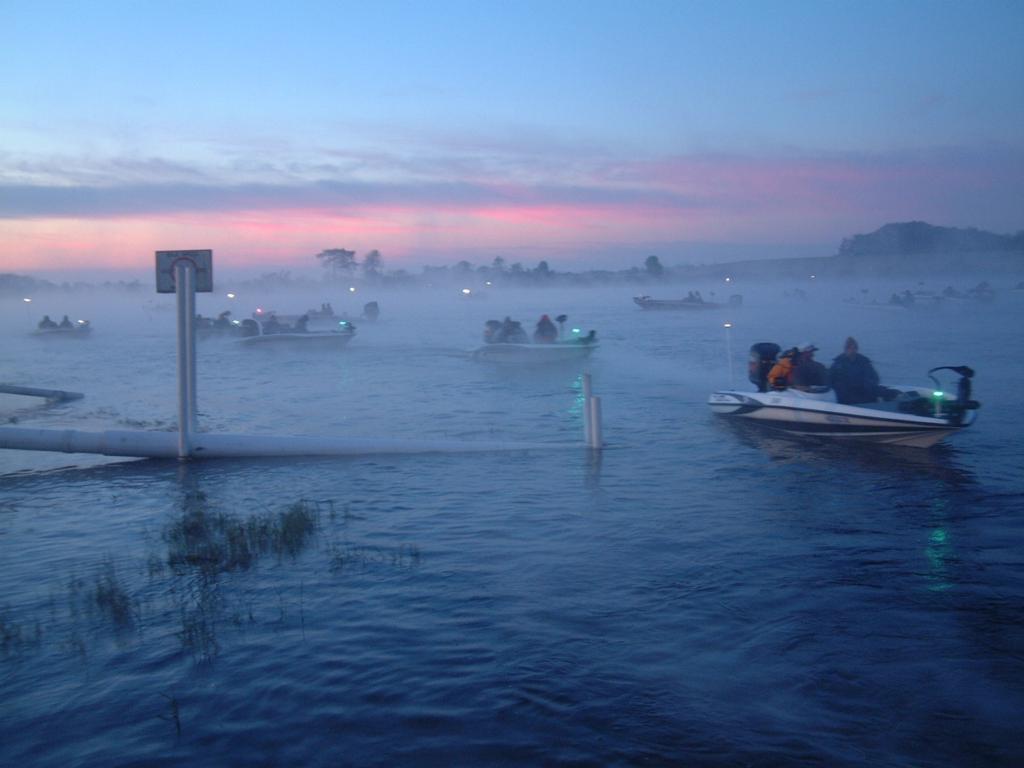
Boasting a $6.24 million total purse, the 2005 EverStart Series kicks off the season Jan. 5 from its usual warm-weather starting point, Lake Okeechobee. After 20 regular-season events spanning five separate divisions nationwide, the EverStart Series wraps up the year in November with the $1 million EverStart Championship on yet another of the nation’s most prolific bass fisheries, Pickwick Lake. In between Okeechobee and the championship are myriad bass-fishing destinations that, though they may differ wildly in location and landscape, should produce the same desired outcome: monster bass.
The EverStart Series received a facelift in the off-season, adding another division – Northeast – and changing the name of the Eastern Division to the Southeast Division. What remains the same, however, is another season of top-notch bassin’ on some of the finest lakes in the country.
The new Southeast Division travels from Florida to South Carolina and then on to Alabama for two tournaments. Anglers can expect a little bit of everything in the Southeast Division – prespawn, spawning and postspawn fish, with readily biting bass available as well as some that are a little more challenging.
Looking ahead in the Southeast Division
Lake Okeechobee
Clewiston, Fla.
Jan. 5-8
Massive Lake Okeechobee in south Florida is fabled as a shallow, grassy bass haven known to produce scores of heavy stringers. The 730-square-mile fishery is the country’s second-largest freshwater lake – right behind Lake Michigan – and, including its drainage basin, stretches 4,600-plus square miles.
Okeechobee – Seminole for “big water” – barely plunges to a maximum depth of about 20 feet, with 10-foot depths being the average. Those figures rose slightly in the aftermath of the 2004 hurricane season which devastated parts of Florida. However, according to EverStart Series pro Sandy Melvin of Ocala, Fla., the water level has already receded quite a bit.
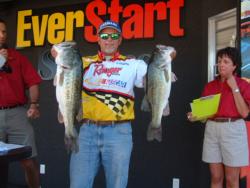 “The high water and heavy-duty winds got it all dirty, and some of the grass died,” Melvin said. “(But) they’ve been dropping it down steadily; now water levels are getting back to winter normal. It may get better and better as we get closer to January.”
“The high water and heavy-duty winds got it all dirty, and some of the grass died,” Melvin said. “(But) they’ve been dropping it down steadily; now water levels are getting back to winter normal. It may get better and better as we get closer to January.”
When the water in Okeechobee is dirty, fish tend to gravitate toward the clearer water, turning the big lake into a rather small fishery. And when the fish – and, thus, the anglers – are concentrated, a more challenging tournament is usually in the cards.
Another factor that could make the Okeechobee bass finicky is the weather.
“Okeechobee in winter is very dependent on the weather,” Melvin said. “Cold fronts in the winter usually happen every five to six days; it’s just a matter of their intensity.”
Melvin predicted that cold weather would force the fish to bury themselves into heavy cover, making the tournament a flipping contest. However, mild weather will spur them into spawning mode, meaning most anglers will rely on sight-fishing to land their bass.
“I like to flip a Berkley Power Hog or a Berkley Craw – a small-profile bait,” Melvin said. “If it’s mild, it’s hard to beat an 8-inch lizard if there’s a lot of spawning going on.”
Nevertheless, Melvin says there’s never a bad time to fish Okeechobee.
“It’s a great lake year-round,” he said. “The situations change, but there are a lot of big fish in Okeechobee. Fishing in some of these cold fronts can be challenging, but generally you can still catch big fish if you can find them. The fishing should be good.”
Santee Cooper lakes
Manning, S.C.
March 2-5
Early March is the perfect time to fish a tournament on the Santee Cooper lakes, according to veteran EverStart pro and Santee Cooper expert Ricky Shumpert of Lexington, S.C.
Comprised of lakes Moultrie and Marion, Santee Cooper provides top-quality largemouth fishing throughout the year. The two lakes are connected by a canal and are quite different in style; Marion is famous for its exposed stumps and trees, while Moultrie offers more open water that is much easier to navigate. The lakes are full of ponds and swamps that are nearly guaranteed to hold a keeper.
The combination of a black bottom beneath shallow water produces warm water temperatures fairly early in the season, typically resulting in an early spawn. In early March, Shumpert predicts that while many fish will be spawning, many will still be in prespawn mode, opening up a wider variety of fishing methods and patterns.
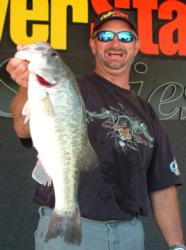 “I’ve said all along that the best time that you can go for everybody to have a great tournament is the first week in March,” Shumpert said. “It’s going to be a little bit of everything you like to do, and there will be a lot of big fish caught.”
“I’ve said all along that the best time that you can go for everybody to have a great tournament is the first week in March,” Shumpert said. “It’s going to be a little bit of everything you like to do, and there will be a lot of big fish caught.”
Depending on rainfall, Shumpert expects Santee to be nearing full pool by tournament time after completing the winter drawdown.
“Usually in March, Lake Marion is better,” he said. “It’s a little bit shallower and a little bit flatter. You have more access to that shallow water that fish can relate to.”
Shumpert says as much as 70 percent of the field will likely be throwing spinnerbaits and jigs, the lures of choice on Santee in early spring. And he should know. In FLW Outdoors events alone, Shumpert has racked up seven top-10 finishes there since 1995, including two EverStart Series wins.
Created by the South Carolina Public Service in the early 1940s as a hydroelectric project, the lake’s name is derived from the two rivers that were connected to form the massive waterway. This river system is what makes Santee Cooper such a phenomenal fish factory, according to Shumpert.
“You have a very good river system that comes into it that the fish can relate to,” Shumpert said. “You have a lot of fresh, moving water and a lot of shallow-water access that can grow some really big fish.”
Lake Eufaula
Eufaula, Ala.
April 27-30
Anglers itching for a sight-fishing tournament should find what they are looking for on Lake Eufaula in late April. According to 2004 EverStart Eufaula winner Koby Kreiger of Okeechobee, Fla., largemouth bass will be hungry for the top-water bite.
“When I think of Eufaula, Ala., I think of some of the most awesome top-water fishing, strike-wise,” Kreiger said. “When a fish hits a top-water on Eufaula, they crush it. I get fired up because of that. It’s a great place to fish.”
Located on the border of Alabama and Georgia, Lake Eufaula stretches more than 45,000 acres and offers some of the country’s finest fishing for largemouths. Spotted bass can also be found there, but they are not nearly as prevalent as the “bucketmouths.”
As in most fisheries, fish behavior at Eufaula hinges on weather conditions. Though air temperatures could be hot that time of year, Kreiger is hoping for a late-season cool-down to stimulate the bite.
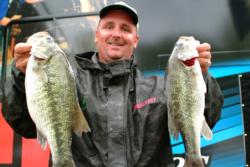 “There will be some fish doing a little bit of everything that time of year,” Kreiger said. “Some have spawned, some will be spawning and some fish will be migrating to deeper water. If it’s really warm, they’ll be a lot farther along, and that’s why we’re hoping for it to be colder than normal.”
“There will be some fish doing a little bit of everything that time of year,” Kreiger said. “Some have spawned, some will be spawning and some fish will be migrating to deeper water. If it’s really warm, they’ll be a lot farther along, and that’s why we’re hoping for it to be colder than normal.”
In 2004, EverStart anglers hit Eufaula in early March. However, since this year’s event is slated for late April, Kreiger is hoping for a late spring in order to lengthen Eufaula’s prime fishing time.
“I imagine it’ll be pretty mild every day of practice,” he said. “It might be mid-70s during the tournament, so the fish ought to be biting pretty good. I would say it’s getting toward the end of the ideal time to fish there.”
Competitors are expected to be sight-fishing and enjoying the tremendous top-water bite, but Kreiger looks for some anglers to be Carolina rigging as well. The fish have plenty of shoreline cover to hide in, thanks to a low-water season several years ago that allowed vegetation to grow. When the water came up, the newly created cover allowed for several years of productive spawning.
“Eufaula has every kind of fishing – shallow-water fishing, deepwater fishing,” Kreiger said. “You don’t have to be a shallow-water fisherman to do well there; it covers the whole spectrum, in my opinion. You’ve got a lot more choices, lots more opportunities and different ways to catch fish.”
West Point Lake
Lanett, Ala.
May 18-21
Look for the fishing to be tough on West Point Lake toward the end of May, says EverStart Series pro Tony Couch of Buckhead, Ga. With the fish in transition mode, anglers may not be able to find them deep or shallow, but rather somewhere in between.
The 26,000-acre lake rests on the border between Alabama and Georgia and offers 500 miles of shoreline to fish for spotted bass. Largemouth bass can also be caught there as well, but spots are the more prevalent species. An impoundment of the Chattahoochee River, the lake is largely found in Georgia, though the EverStart event will launch from the Alabama side.
According to Couch, while the majority of bass will be in the postspawn stage, moving from shallow water to deep, there may be bass that are still in the spawning stage.
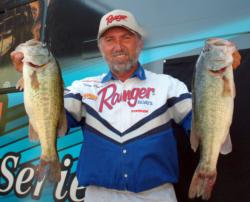 “There’s going to be a lot of different patterns that are going to work, anything from a Carolina rig and deep-diving crankbaits in 15 to 25 feet of water to spinnerbaits and buzzbaits in a foot of water,” Couch said. “There might even be a few left on the beds, guarding their nest and fry. There’s going to be a lot of patterns spread out from one end of the lake to the other.”
“There’s going to be a lot of different patterns that are going to work, anything from a Carolina rig and deep-diving crankbaits in 15 to 25 feet of water to spinnerbaits and buzzbaits in a foot of water,” Couch said. “There might even be a few left on the beds, guarding their nest and fry. There’s going to be a lot of patterns spread out from one end of the lake to the other.”
Couch says plastic worms in June bug and watermelon colors ought to be effective at tournament time, while chartreuse and white spinnerbaits and buzzbaits will likely land a few bass as well. He expects the lake to be clear and at normal pool by the tournament’s kickoff. Anglers can also expect warm temperatures, with highs in the mid-80s to low 90s.
Though Couch expects the tournament to be challenging, he says that if the area has a warm spring that causes the fish to spawn sooner, then they will be deep and thus easier to locate come tournament time.
“It can be pretty sticky that time of year because you have so many fish that are strung out between shallow water and deep water,” he said. “If that’s the situation, then the fishing is going to be tough. However, if for some reason it’s been warmer and the fish have spawned sooner, there will be more fish deep, and the fishing will be really good – or vice versa if we have a later spring. There will be a lot of fish spawning, which will make the shallow fishing really good. It’ll be an iffy situation.”
Couch looks for an early morning spinnerbait-buzzbait bite to be effective, as the shad will be spawning in the grass and riprap.
“People are going to catch a lot of small fish for sure,” he said. “There’s a lot of fishing pressure on the lake. I feel like, to make the cut, it’ll take 20 pounds, and it’ll probably take 25 to 26 pounds to win the last two days.”